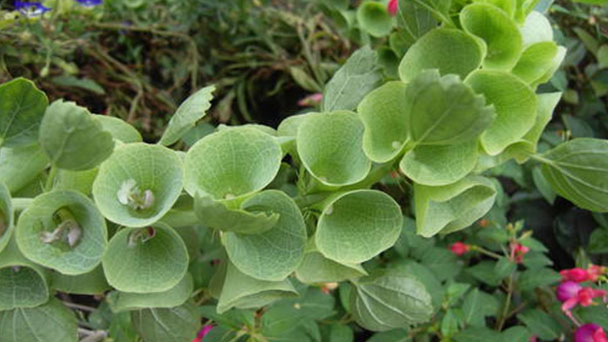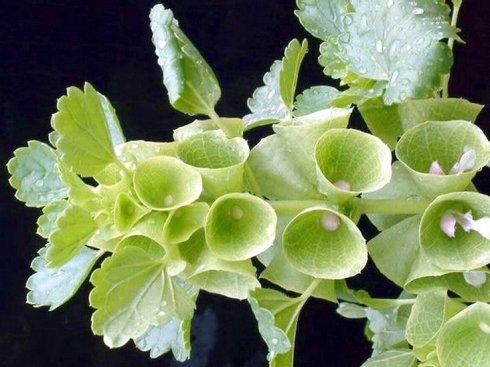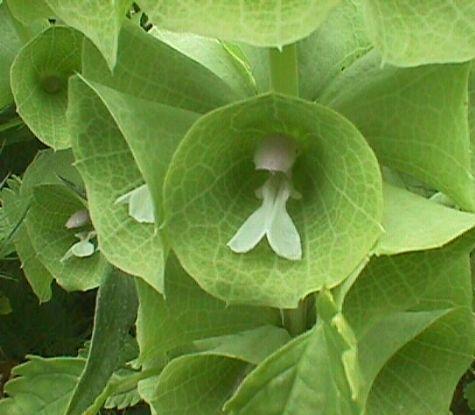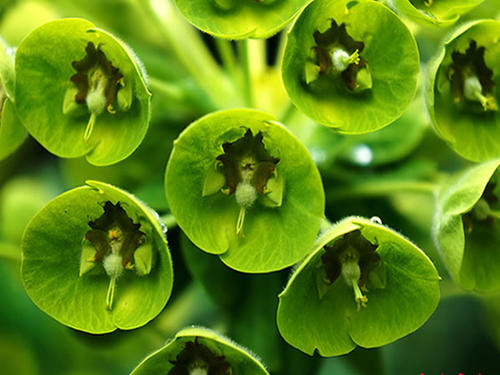Bells of Ireland (Molucella laevis) profile
Written by Maggie
Mar 08 2021

Bells of Ireland (Molucella laevis), also known as Molucca balmis, shellflower or shell flower, is a biennial herb of the genus Bells of Ireland belongs to the lamiaceae family. Plant height is 35 -- 100cm, the stem four edges, not branching. Leaves are opposite, heart-shaped round, margin sparsely toothed; Petiole is subequal to leaf length. Flowers are white, corolla labate; Nuts are smooth. Bells of Ireland is one of the most popular flower arranging materials in the world. It can also be used as dried flowers and potted plants. Bells of Ireland is native to western Asia and Syria.
Bells of Ireland picture

Bells of Ireland info
| Botanical Name | Molucella laevis |
| Common Names | Bells of Ireland, Molucca balmis, shellflower or shell flower |
| Plant Type | Annual |
| Light | Full sun to part shade |
| Native Areas | Turkey, western Asia |
| USDA hardiness | True annual, grown in zones 2 to 11 |
| Flower color | White, inside a bright green calyx |
| Mature size | 2–3 feet, 10–12 inches wide |
Bells of Ireland features
Bells of Ireland is 40 -- 100cm tall, opposite, cordiform, obtuse.
The seeds of Bells of Ireland were triangular, and the seedlings emerged about one week after sowing. The seedlings grew slowly, and the true leaves did not grow until 20 days later, and the seedlings were still small more than a month later. It will take about 2 months to have a little bit of appearance, and you can see the flowers in about 3 months. The trumpet - like sepals are small white flowers with six whorls. The fragrant calyx looks like a shell. The flowering period is from June to July and the green is very beautiful.
Bells of Ireland's corolla lips, calyx green like a shell, hence the name. Stem is erect, stem four-sided, branching weakly.
Bells of Ireland's ecological habits
Sunlight and well-drained soil are preferred. A fertile, loose, well-drained loam is preferred. The suitable seeding temperature is 15-25℃. Bells of Ireland is pleased in sunshine and well drained soil.
How to grow and care for bells of Ireland
Sunshine: Good sunshine.
Temperature: Bells of Ireland like warm, suitable temperatures for childbirth 15 ~ 25 degrees.
Cultivated soil with fertile loam and good drainage. Seedlings 10 -- 15 cm high, heart plucked once, pushing branching.
Fertilization: top dressing once a month.
Propagation can be carried out by sowing method in spring, summer and autumn. The suitable sowing temperature is 15-25℃, germination can be carried out in about a week, and transplanting can be done after 5-6 true leaves. Cultivation with fertile, loose, good drainage loam as the best soil, soil should not be too sticky, otherwise it will not grow, slow growth. After transplanting to survive, start fertilizing, half a month, stop fertilizing after flowering. To promote its branching, the heart can be picked.
The growth is strong, there are few pests and diseases, but pay attention to the harm of leaf miner flies. For ornamental needs, Bells of Ireland can be sown in stages and batches.
Soil
The soil should be fertile and well drained. Transplant 5-6 leaves with soil. Fertilizer and water should be applied after survival. To promote more branching, top and heart can be plucked at an early stage.
Bells of Ireland culture requires fertile soil and good drainage. Transplant 5-6 leaves with soil, and fertilize and water them after survival. In order to promote multi-branching, you can pick the top and heart at an early stage.
Bells of Ireland's propagation
Propagation: Sowing method, autumn, winter, early spring can be sown.
Bells of Ireland propagation can be carried out by sowing method in spring, summer and autumn. The suitable sowing temperature is 15-25℃, germination can be carried out in about a week, and transplanting can be done after 5-6 true leaves. Cultivation with fertile, loose, good drainage loam as the best soil, soil should not be too sticky, otherwise it will not grow, slow growth. After transplanting to survive, start fertilizing, half a month, stop fertilizing after flowering. To promote its branching, the heart can be picked. Bells of Ireland are growing well, with few pests and diseases, but beware of leaf miner flies. For ornamental needs, it can be seeded by stages.

Bells of Ireland varieties
There are few cultivars of M. laevis available, but one very popular variety is 'Pixie Bells'. It is quite similar to the species, but with shorter, sturdier stems that are much less likely to topple over when the plants get wet. Most gardeners prefer it over the species plant.
Bells of Ireland disease control
The land should be fertile and well drained. 5-6 leaves should be transplanted with soil and should be fertilized and watered after survival. In order to promote more branching, the top and heart can be picked at an early stage.
Bells of Ireland uses
Ornamental purpose
Bells of Ireland is one of the most popular flower arranging materials in the world, and can also be used as dried flowers and potted plants.
The seeds of Bells of Ireland are triangular, and the seedlings appear about one week after sowing. The seedlings grow slowly, and the true leaves come out after 20 days, and the seedlings are still small more than a month later. It took about two months for anything to happen.
You can see the flowers in about three months.The trumpet likes its sepals, small white flowers, six whorls, like a collar, so it is also called a collar.
Bells of Ireland is an important flower lining material popular in the world, and can also be used as dried flowers and potted ornamental.
Flower is peculiar, simple but elegant and beautiful, Bells of Ireland is an important flower lining material popular in the world, it forms white after drying, it is a good material for dry and fresh flowers, and it can also be potted and ornamental.
There are a variety of horticultural varieties, but the calyx is green, white, yellow and other types.
Bells of Ireland garden use
Bells of Ireland is one of the most popular flower arranging materials in the world. It is a good material for drying and flowers, and can also be used for pot planting.

Latest Updated
- Benefits of Bugleweed - 7 Science-backed Health Benefits
- Bugleweed Dangers & Side Effects - Is It Poisonous?
- How to Plant Evergreen Trees - What You Should Know
- When to Plant Evergreens - Grow Guide for Evergreen Trees
- 12 Wonderful Evergreen Shrubs for Your Garden
- 12 Popular Evergreen Plants with Pictures for Beginners
- When And How To Prune A Lilac Bush Like a Pro
- How to Grow & Care for Lilac Vine (Hardenbergia Violacea)
- Japanese Lilac Tree (Syringa Reticulata) Care & Propagation Guide
- Shumard Oak Pros and Cons - What to Know
Popular Articles
- Winter maintenance of Antirrhinum Majus
- How to Grow Terminalia Mantaly Tree
- How to Grow and Care for Crossostephium Chinense
- How to grow Antirrhinum Majus in spring
- Peristeria Elata (Dove Orchid) Profile: Info & Care Guide
- Underwatered Snake Plant (Sansevieria Trifasciata) - Signs And How To Fix
- How to Care for Brazilian Jasmine Plant (Mandevilla Sanderi)
- How to Grow & Care for Graptopetalum Purple Delight in Summer
- Rosa Chinensis (China Rose): Plant Growing & Care Tips
- How to Care for Baby Sun Rose (Aptenia Cordifolia)